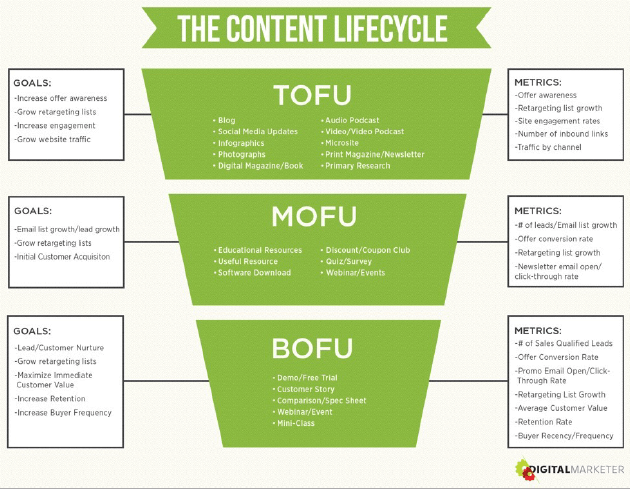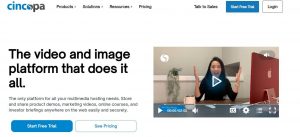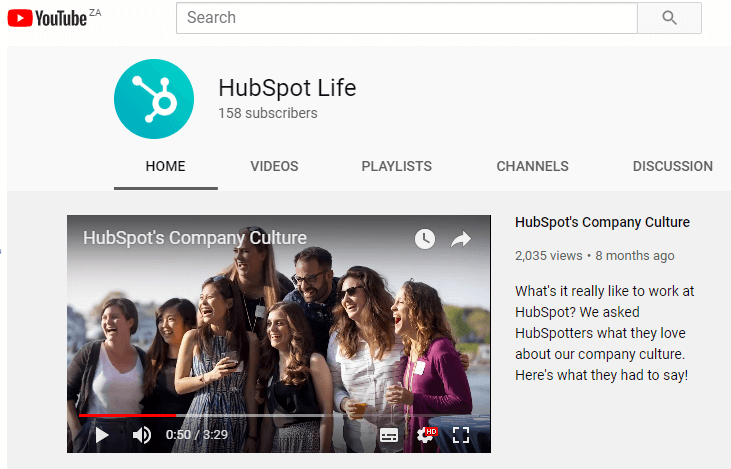There’s ample proof that video is a must for B2B brands. In 2019 alone, 50% of marketers used and invested in more video content. In fact, it became the top used content format, beating blogs and image-based content. Video has also become a priority medium on social media. Every platform you use today includes an algorithmic update to position videos above other forms of content.
And the stats are staggering. Twitter gets 2 billion views per day. A third of Instagram stories, which are shared as videos, are from brands. And 500 million people turn to Facebook to watch videos daily.
But to be competitive, you must have a video marketing strategy. You need to know what your brand plans to accomplish, why those goals matter, how you’ll achieve them, and how to measure your success.
B2B Video and Your Content Marketing Strategy
Your video marketing strategy must tie into your content marketing strategy and support your larger goals to be effective.
Before you set up a video studio and hit record, you need to do a bit of research. You need to get a better understanding of your market.
How to Build Your B2B Video Marketing Strategy
Competitive analysis is one of the most critical components of an effective marketing strategy. It informs every aspect of your video content production.
The thing is, few brands take time to assess their competitors, the content they produce or deconstruct their strategies.
If you’ve wondered how to produce your very own competitive analysis for video marketing, here are three steps you can use.
1. Identify Your Competition
First, identify who you’re going up against. Generate a list of all competitor brands in your industry. On your list include links to their social media accounts and websites.
2. Examine Their Content
Next, look at the content they have created. Video marketing content can be used at every stage of the content marketing funnel. As you go through various types of videos, gauge the types of videos and where they fit into the funnel.
For example, if you’re in the CRM space, HubSpot CRM would be a competitive solution. HubSpot has many explainer videos designed to help buyers understand the ins and outs of their CRM and how it supports sales and marketing. Explainer videos are also both top-of-funnel and middle-of-funnel, depending on how elaborate they are.
15 to 30-second ads, on the other hand, are top-of-funnel video marketing tools. They introduce your brand and product to your audience.
Once you’ve gathered the various types of videos, grouped by state and funnel, you’ll begin to piece together a basic framework of your competitor’s video marketing funnel.
3. Deconstruct Their Funnel
Lastly, you want to understand how each video supports the marketing funnel. This step is more labor-intensive. It involves watching each video and combing through descriptions and supporting text to find call-to-actions and links.
Your goal is to understand how your competitors use video to guide buyers through their journey to becoming leads and, eventually, customers.
And this is critical.
Knowing which videos generate the most engagement and where they fit into the marketing funnel will give you a good indication of the types of content you should be focusing on. If you know that a certain kind of video will generate results, you save yourself a lot of time (and budget) trying to figure out what works.
Set Video Marketing Goals and Metrics That Matter
Having completed your competitive analysis, it’s time to identify your video marketing goals. While this may seem slightly counter-intuitive, it’s a more data-backed approach.
By understanding who your competitors are, the types of content they produce, and the kinds of results they receive, you gain better insights into the expected results. As you begin to look at your goals and the metrics, you’ll realize that most of this data is right in front of you. It’s in the form of information gathered from competitive analysis.
But don’t forget to lean into the content marketing funnel. It provides goals and metrics for each stage. DigitalMarketer’s content marketing funnel includes both. It shows how to quantify your efforts and tie them back to their overall objectives.

Content marketing lifecycle funnel from DigitalMarketer
Plan Your Content
Having gathered solid competitive analysis and established video marketing goals and metrics to track, it’s time to plan your content.
The type of content you create will depend largely on video content your brand has produced in the past.
For example, if you’re trying to get more views on YouTube and find that you’re just not attracting as many new viewers as possible, you haven’t produced enough top-of-funnel content.
In this scenario, your goal would be to start building a larger audience. Focus on top-of-funnel videos that introduce your brand and product, but also identify and define problems buyers experience on the road to acquiring a solution like yours.
Videos for Each Stage of the Funnel
Here’s a collection of videos that you can produce for each stage of the funnel.
Build Awareness at the Top of the Funnel
Advertisement
Ads are a quick and effective way to get in front of your audience. They should immediately grab attention by highlighting a problem and then offering a solution.
Take QTIS’s ad. In 48 seconds, they identify challenges that their ideal customer experiences and illustrate how they help businesses streamline IT and become efficient.
Interview a Specialist or Expert
Interviews are perfect learning resources for buyers, whether recorded or a live stream. The presence of an industry expert goes a long way and supports a healthy and positive perception of your brand.
At the 2019 RSA Conference, Data Theorem took the opportunity to position themselves as experts in an interview by exploring trends in the cybersecurity space. If you’re looking for an enterprise security solution, this interview is packed with valuable information.
Behind the Scenes/Culture
Culture videos showcase the faces of the people behind the scenes. They help customers develop a more human connection with your brand.
For example, HubSpot dedicates an entire YouTube channel called HubSpot Life to share their culture. While not a large channel, it still helps position their company as approachable and ready to help.
Educate
How-to/Explainer
Explainer videos are likely the most common videos available today. When produced effectively, they quickly bridge the gap between a buyer’s problem and your solution.
Take Experticity. They connect brands with influencers to help share their solutions with the world. If you’ve considered influencer marketing, you know that identifying and screening potential candidates isn’t easy.
Experticity shares that they offer in-depth profile analysis that you wouldn’t otherwise have access to. Their 36-second explainer video highlights how valuable knowing who your star influencers are, and how Experticity helps you identify them.
Create a Product Review
Product reviews address the finer details of a solution and how it works. They are essential as more buyers turn to the web to conduct research before interacting with a sales representative.
Lior Izik created a product review video targeted at Zoho business suite buyers. In it, he unpacks Zoho’s suite of 40 apps and how they work together to help businesses thrive.
Listicle
Listicles are designed to share critical information. They serve as a round-up of sorts, giving buyers a broader view of a specific topic related to your solution.
Turner Moore created a 1-minute video to highlight 5 reasons for business owners to appoint an accountant. While short, this video covers 5 valid and important points business owners may be concerned about when managing their finances.
Convert
Product Tours and Demos
Product reviews are an important part of the buying process. They give customers more insight into the inner workings of your solution. They also help identify any potential challenges during usage or adoption, issues that could cost them time and money.
Asana knows that project management isn’t the easiest practice for many businesses. To show how effective their solution is, their product review explores the creation of projects, tasks, assigning team members, dates and more.
Case Study/Testimonial
Social proof is one of the most well-known and effective marketing tools out there. It settles any last-minute doubts and helps convert ready-to-buy customers.
Video social proof is a powerful medium. It conveys stronger messaging. And when accompanied by the right background music. It can help trigger the right emotions and influence buyers to take action.
For example, the testimonial video below shares a cross-section of customers who have all been serviced by the same vendor. They share positive reviews and specifics they appreciated when working with Peter.
Promote Your Content
Promotion is as important today as it was at the dawn of marketing. And when it comes to your video content and getting out there, you need to develop a promotion strategy to get as many eyeballs as possible to your content.
Here are four channels to use:
- Social media. Publish videos on all social media accounts and encourage followers and employees to engage and share as much as possible to reach a wider audience.
- YouTube. As a low-hanging fruit, YouTube is one of the easiest ways to position your brand in front of the large captive audience. If you haven’t yet, establish a channel and start sharing videos.
- Email. Take advantage of subscriber lists. They are a great opportunity to engage buyers and drive traffic to your videos.
- Your website. Websites are destinations for many buyers. The more valuable content you can offer, the better. Position your videos strategically on your home and product pages.
Track Your Performance
The beauty of digital marketing is that it’s possible to track any and every form of engagement. And when it comes to video marketing, all platforms available offer tools and a set of metrics to help you gauge how successful your content is.
As you develop a strategy, identify which metrics to track across various platforms and why they matter.
For example, YouTube measures watch-time. It’s seen as one of the most important metrics on the platform. If you plan to generate many views and grow your channel, you’ll need to come up with creative ways to get people to watch more of your videos more often.
Cincopa: A Cutting-Edge video platform for retailers

Cincopa is an all-in-one secure video and image platform built for eLearning companies, marketers, sales, and enterprises. Upload, host, monetize, add lead-generating interactive elements, and track content.
Key Features:
- Cincopa offers a comprehensive video platform with interactive elements, live streaming, galleries, embedding, channels, and portals.
- Customizable video player for images and galleries with easy-embed options.
- Integrates with your whole tech stack. Cincopa offers hundreds of integrations with popular CMS, LMS, and Marketing automation tools.
- The pricing for Cincopa is more affordable than other video hosting platforms and you get more uploads.
Conclusion
Your B2B video marketing strategy is an important part of building a stronger and more competitive brand. But you’ve got to build a strategy that will differentiate your brand and deliver results.
Identify your competitors, position your brand and products/services competitively, know what video content to produce, and how to track the performance of your videos to ensure they drive results.

Author: Amir Shahzeidi
Amir is the digital marketing manager at Uscreen, an all-in-one OTT platform that empowers video entrepreneurs and creators to monetize their content and build thriving businesses around their videos.




![Benchmarking Growth Strategies of Top Fashion Retailers [Study]](https://blog.contactpigeon.com/wp-content/uploads/2025/11/top-fashion-retailers.jpg)